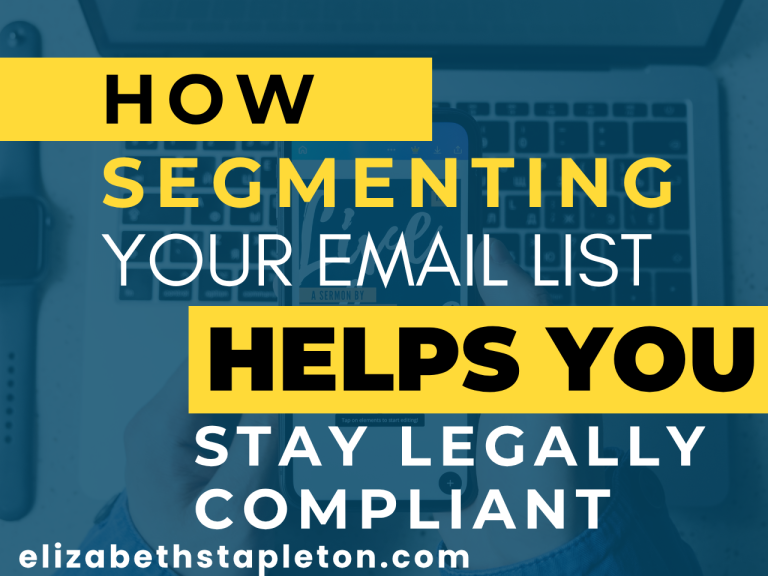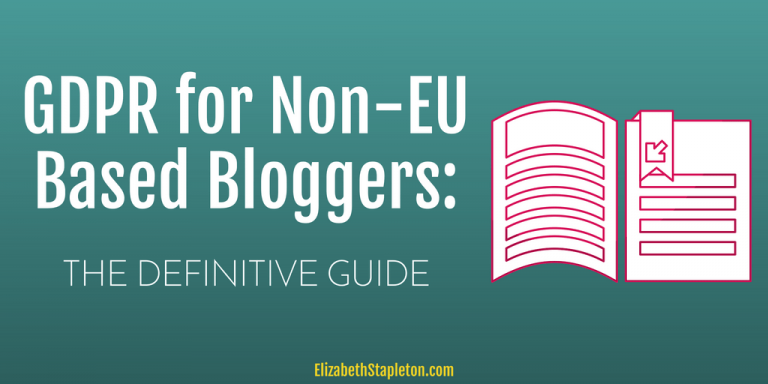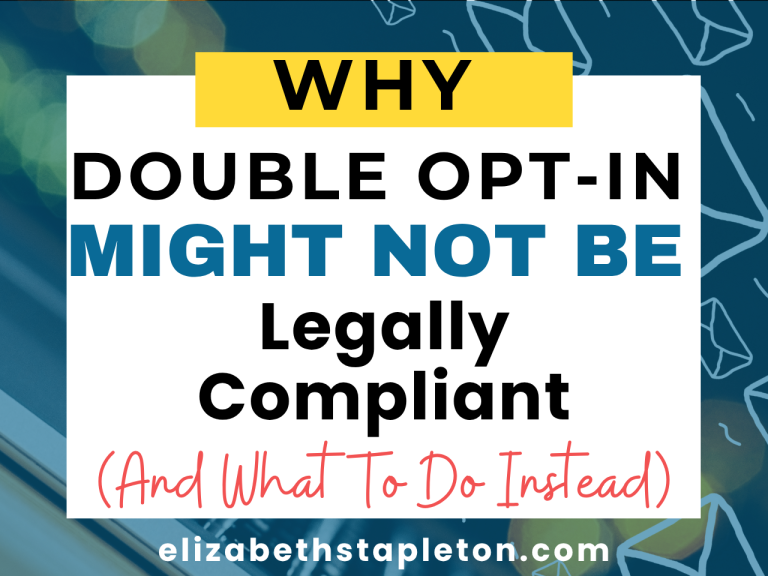Do You Need to Include a Physical Address in Your Emails? Yes, But Here’s What That Can Look Like
If you freaked out when setting up your email marketing service account, because it asked for an address that would be publicly available in your emails, you’re not alone.
You might question“Do I really NEED to include a physical address in my emails?”
Unfortunately the simple answer is: Yes. But that doesn’t mean it has to be your home address.
Keep reading to learn:
- Why you’re required to include a physical address in your emails
- What your real address options are (hint: you have more than you think)
What is Legally Required
When you’re sending email broadcasts, whether it’s for a product, freebie, or your latest blog post, you’re sending what’s called “commercial email.” And commercial emails are regulated by law.
The applicable law in the U.S. is the CAN-SPAM Act. This U.S. law states that every commercial email must include three key things:
- a way to unsubscribe,
- an honest subject line, (for example, avoid using “RE”) and
- a valid physical address.
That address has to be real. It can’t be made up or left blank and it needs to be in every single email you send.
What Are Your Options When It Comes To A Real Physical Address
While the law requires you to have a physical address for email marketing, that doesn’t require you to use your home address. There are several other options that will keep you compliant and protect your privacy.
Let’s walk through them, along with the pros and cons of each:
Your Home Address
This is the easiest option because it’s free and you already have it. But for many online business owners, especially those working from home, it can feel uncomfortable or even unsafe to publicly share that personal information.
- Pros: Free and you already have it
- Cons: Gives out your private information
P.O. Box
My preferred option, a P.O. Box is a mailbox you rent from the post office. It gives you a separate mailing address that keeps your home address private. It’s usually the most affordable option and has the benefit of being able to forward mail to a new address if you ever move.
- Pros: Protects your privacy, affordable
- Cons: Costs money, requires you to go out and get it set up
Commercial Mailbox
A commercial mailbox is a mailbox rental from a source such as UPS. It gives you a street address, which looks more like a business location. It’s a popular option for small business owners who don’t want to rent office space but do want a more professional look.
- Pros: Looks like a real street address, great for privacy
- Cons: Slightly more expensive than a P.O. Box, doesn’t offer mail forwarding if you ever decide to switch
Email Marketing Service Address (like Kit)
Some platforms, like Kit (formerly ConvertKit), let you use their business address when you’re just starting out. It’s a great solution if you want to delay setting up your own address right away.
- Pros: Free (with some providers), instant setup
- Cons: May not be available to all users or forever
| Option | Pros | Cons |
| Home Address | Free, quick to add | Privacy risk |
| PO Box | Inexpensive, protects privacy | Not Free |
| Commercial Mailbox (e.g., UPS Store) | Looks more like a street address | More expensive, doesn’t offer mail forwarding |
| Email Tool Address (e.g., ConvertKit’s) | Easy, built-in with some ESPs | May not always be available or permanent |
Where to Put Your Address in Your Email
Now that you’ve picked an address to use, let’s talk about where it actually goes.
The most common and legally compliant place to include your address is in the footer of your email. Generally email marketing tools like ConvertKit, MailerLite, or Flodesk, will often build the footer into your email template already—so you just need to make sure it’s filled out correctly.
You can usually set your mailing address once in your email platform’s settings or profile area, and then it will automatically show up at the bottom of every email you send.
Just double-check that it’s the right address and that it’s showing up properly. If you ever change your address, make sure to update it in your email service provider so you stay compliant.
It’s also worth noting: the footer is where your unsubscribe link lives too. That, plus your physical address, is what helps your emails stay out of spam folders and on the right side of the law.
Bottom Line – You Need a REAL Address but it doesn’t have to be your home address
Including a physical address in your emails isn’t just a “nice to have”—it’s legally required. But that doesn’t mean you have to give up your privacy by using your home address.
You have several options, from using a PO box, commercial mailbox, to your email platform’s address, you can find a solution that fits your business and your budget. Just make sure that once you pick one, you keep it updated.
Ready to Make Sure All Your Email Marketing Is Legally Compliant?
If you want to go beyond just adding an address and make sure your entire email setup is compliant with GDPR, CAN-SPAM, and more…
👉 Grab the Website Legal Templates Bundle — it includes everything you need to protect your business without breaking the bank.
FAQs About Physical Addresses in Email Marketing
Still unsure about the rules? Here are some of the most common questions I get from bloggers and digital business owners:
Do I have to include my address in every email?
Yes. Every single one. Whether it’s a broadcast, a welcome email, a sales sequence, or a weekly newsletter—if it’s a commercial email, it needs a physical address in the footer.
Can I use a fake address or just leave it out?
Nope. Using a fake address or skipping it completely violates the CAN-SPAM Act and could get you flagged by your email platform—or worse, fined.
What if I don’t want to use my home address for Email Marketing?
That’s totally valid, and you don’t have to. You can use a PO box, commercial mailbox, or in some cases, your email platform’s business address (like Kit offers). These are all real, acceptable options that protect your privacy.
Will my audience actually see this address?
Yes, it’s visible in the footer of your email. But most readers are focused on your content—not your contact info. As long as the address is legitimate, you’re good.
Is there a difference between a PO Box and a commercial mailbox?
Yes. A PO Box is clearly labeled as such, while a commercial mailbox gives you a street address, which can look more professional.




